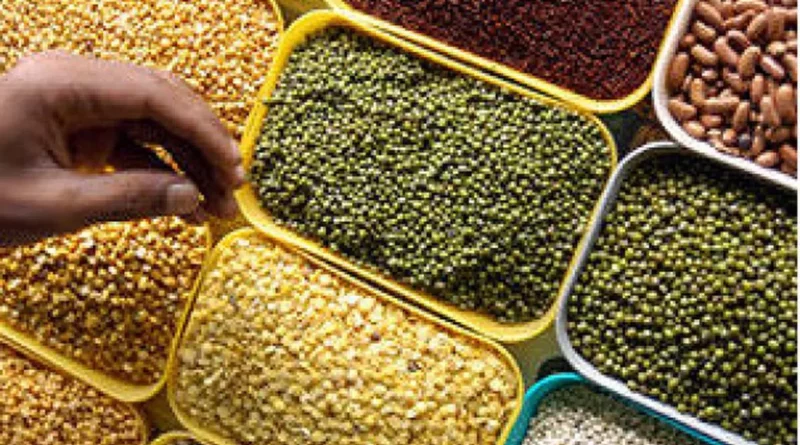Import reliance for pulses, oil seeds to stay through FY31: Study
By Sandip Das
The country will continue importing large quantities of pulses and oilseeds by 2030-31 because of a substantial gap between demand and supply of these commodities, a research paper by Nabard and Icrier has stated.
Production of pulses according to the study is projected to increase to 35 MT by 2030-31, from 26 MT in 2022-23 (July-June) crop year. However, the country would require 39.2 MT of pulses by FY31 thus resulting in huge imports.
Currently, India imports about 15% of its pulses consumption. The paper titled ‘Prospects of India’s demand and supply for agricultural commodities towards 2030’, has recommended steps to crop productivity and reduce the high dependence on imports, including via use of seed and farming technologies.
“There is a need to increase the level of production and productivity of oilseeds, and pulses since their demand in the future shows higher growth, relative to their supply,” the paper has noted.
India’s import of edible oils – palm, soybean and sunflower – rose 17% on year to a record 16.47 million tonne (MT) valued at Rs 1.38 trillion in the 2022-23 oil year (November-October).
India imports about 56% of its total annual edible oil consumption of around 24 to 25 MT. Palm oil has a share of about 60% of imports, followed by soybean oil at 22% and sunflower at 17%.
The share of domestic edible oils in total output includes mustard (40%), soybean (24%) and groundnut (7%) among others.
“A technological breakthrough in oilseeds to increase productivity or area expansion are two possible solutions to improve oilseeds’ balance -sheet in the long run,” the paper has stated.
However, it cautioned that achieving ‘self-sufficiency’ in traditional oilseeds such as mustard, groundnut and soya would require an additional area of 39 million hectares under oilseeds, which could cut area under cereals thus endangering the food security of the country.
It recommended ramping up efforts in increasing productivity of oil palm comparable to Indonesia and Malaysia with a productivity of 4 tonne/hectare to reduce import dependency of edible oil.
Under the national mission on edible oils-oil palm, the government is aiming to promote the cultivation of oil palm and increase production 2.8 MT by 2029-30, thereby, reducing dependence on edible oil imports.
The study also recommends increasing production through public investment in irrigation, agricultural research especially for climate resilient varieties and infrastructural development such as road networks and agro-processing facilities
For increasing the supply of high-value commodities in accordance with increasing demand as well as to manage surpluses of the other commodities, the study has recommended investments in market infrastructure, processing, and storage facilities such as warehouses, cold storage, cold chains etc to build an efficient and reliable value chain, linking farm to the market efficiently.
This article has been republished from The Financial Express.

